A surprisingly epic tale is to follow. Whether it is educational or not I do not know. I know that I learned a great deal, if such is possible for one who considers most erstwhile knowledge as mere information. I share with the fragile hope that you will gain something, something that otherwise would have been difficult to gain. No pain, no gain, they say (smiling emoji).
It began with an innocent ominousness. That’s right. Perhaps the refrigerator is tired? Notice how it’s leaning to the left? It refused to speak of how it was feeling. Normally, as in always, it had stood straight.
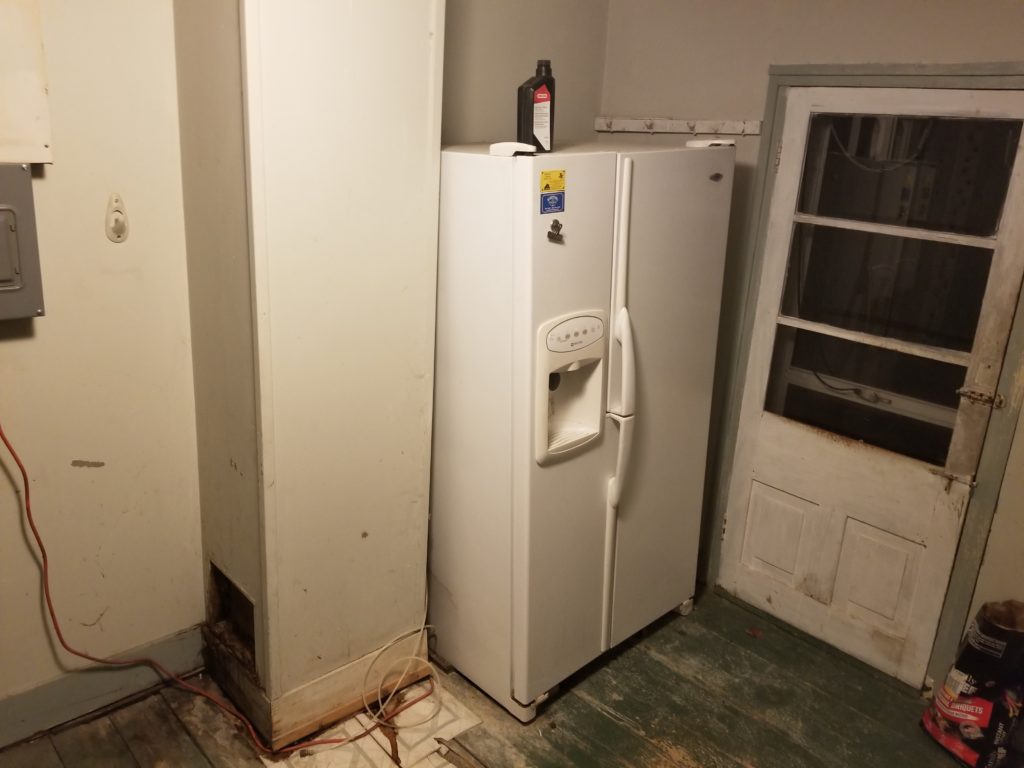
Closer (intrusive and destructive) inspection revealed that it was not so much the refrigerator but the floor that was having the problem.
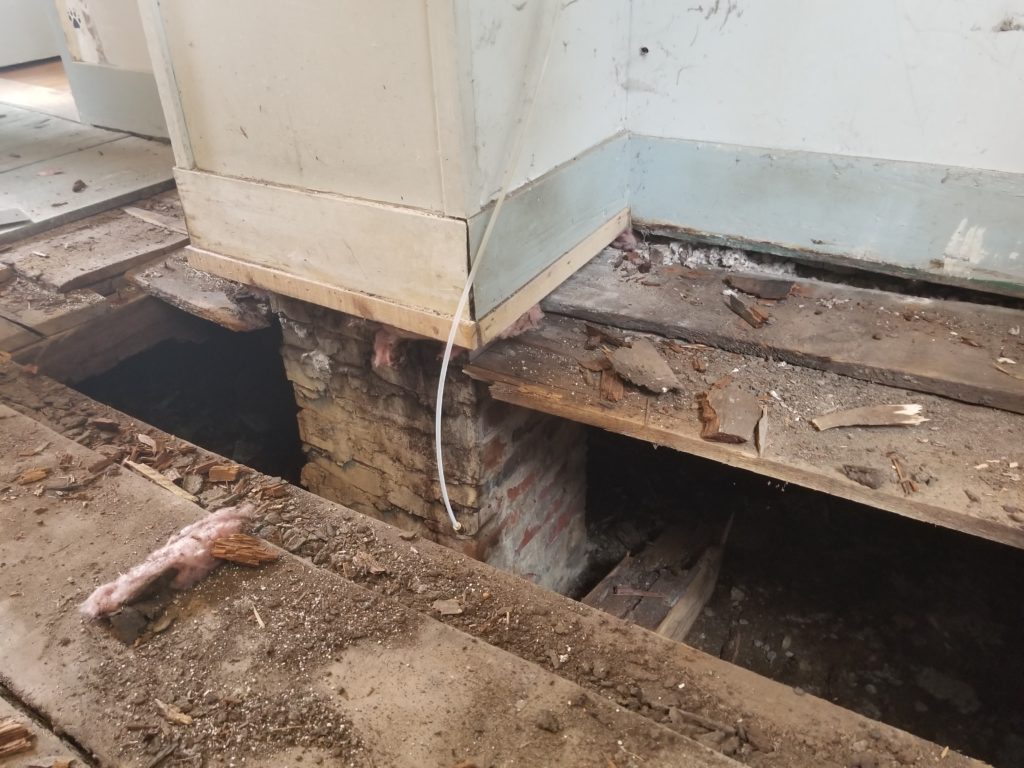
I trust you will notice the glorious 5 x 7 beam that seems to rest at an improper angle. Failed in the line of duty. Broken, rotted really. No longer suitable for use as designed.
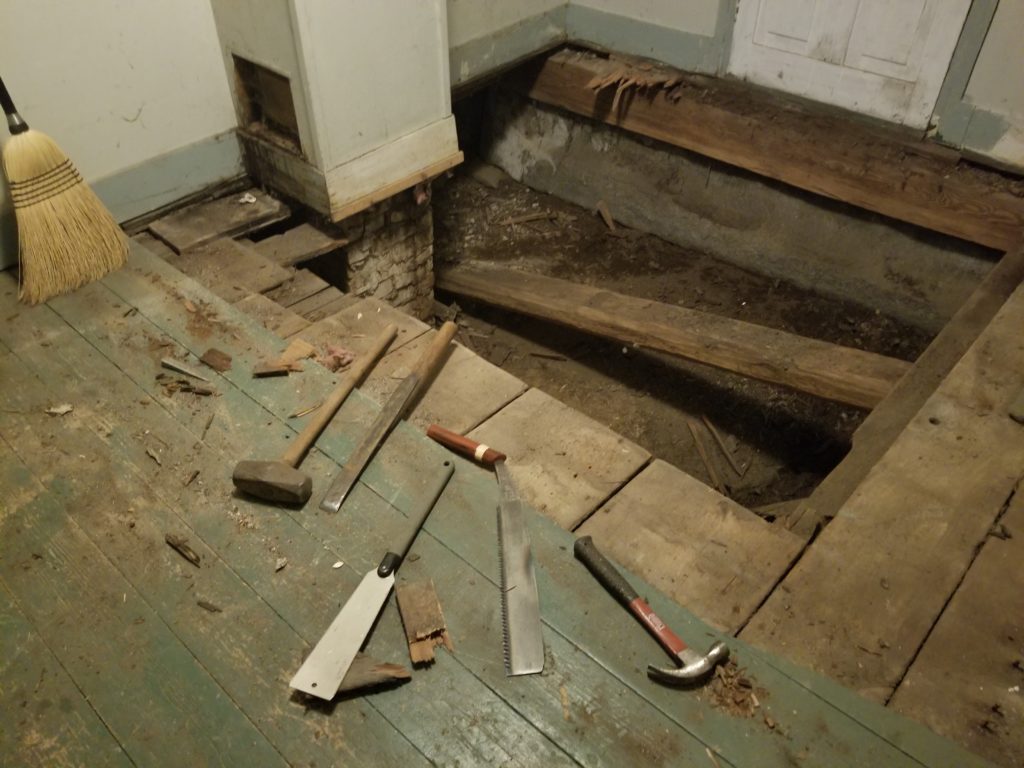
Perhaps it becomes clearer now.
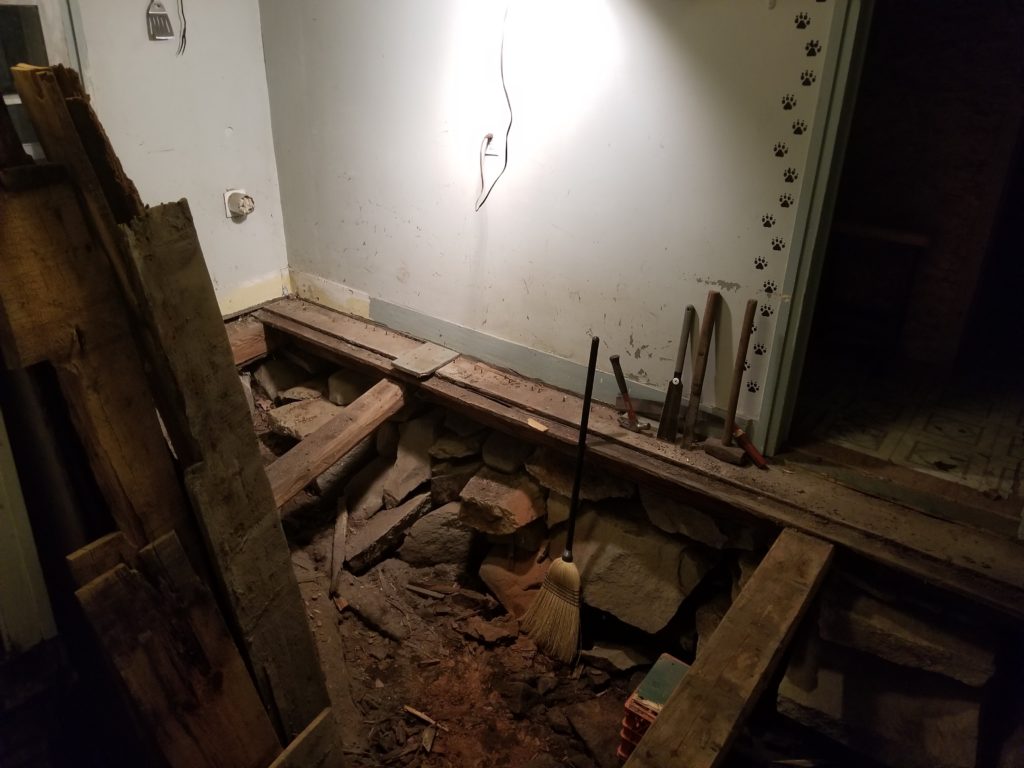
Not obvious in this picture (because it’s not there) is the fact that the middle beam was even more severely compromised. Unsaveable, a lost cause, gone caput. To restore this pantry to its former functional state, that’s the journey this post will narrate. Below you can behold what I came to fondly describe as the ‘bridge of doom’. The refrigerator had fled, of course, into the space behind that wall on the left – a peculiar space four feet wide and fourteen across (fourteen deep if you just looked into it) left there to keep firewood indoors. Of course the refrigerator needed to be visited several times a day, and from the kitchen, from whose door the photo below was taken. Therefore each day, with due attention to balance, several times I would traverse the beam, sometimes hands full, asking myself why why why was it not worth temporarily making a safer way. The challenge, of course. That which does not destroy me, etc. I’m very glad to report a mishap count of zero, not that this justifies my decision making process.
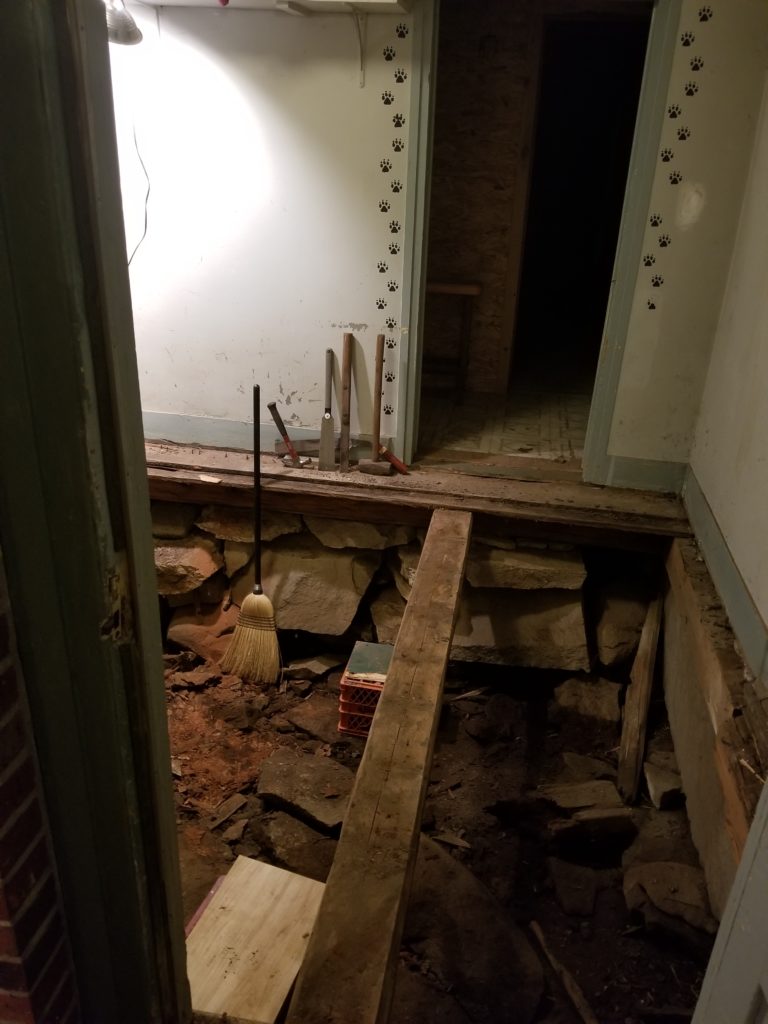
Getting down into the pit and looking under, toward the kitchen. A thin layer of wet earth on top of bedrock outcroppings, simple wooden 4 x 4’s, rotten at their base, and then another stone cross wall perhaps 10 feet in.
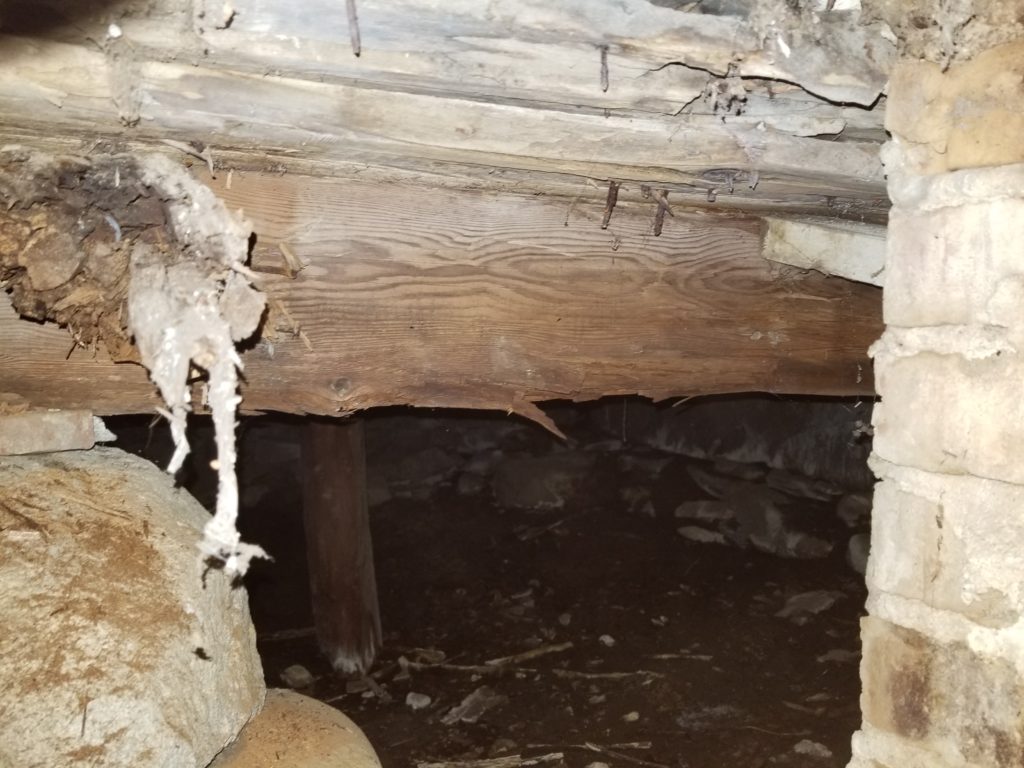
It gave me many hearty laughs to see the devil-may-care precision with which these underlying/supporting walls were constructed. What is good enough? Our friend Boris would know, may he rest in peace, but who even remembers Mr. Gudenoff now? Good enough certainly were my tools of destruction – my Grandfather’s sledge hammer, two Japanese pull saws (one ‘timber class’), and old oak-handled pry bar, a standard hammer. These worked great.
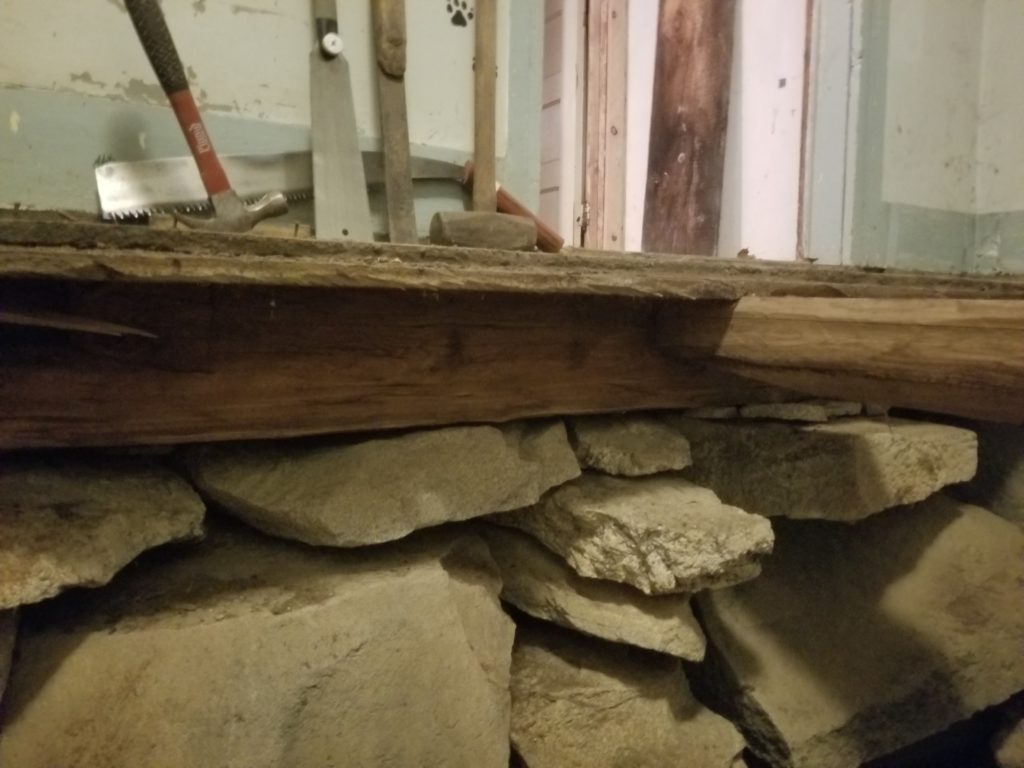
How quickly (three weeks?) from despair to hope? Would that the time were so short for the many, that the causes were so delightfully addressable. A most industrious neighbor. who in addition to farming also runs a sawmill on his farm, cut the new 5 x 7 beams, notched them into place, shored up the new beams as shown below, and supplied the planks that I might complete the decking. This was an utterly fabulous turn of events and one for which I remain most grateful.
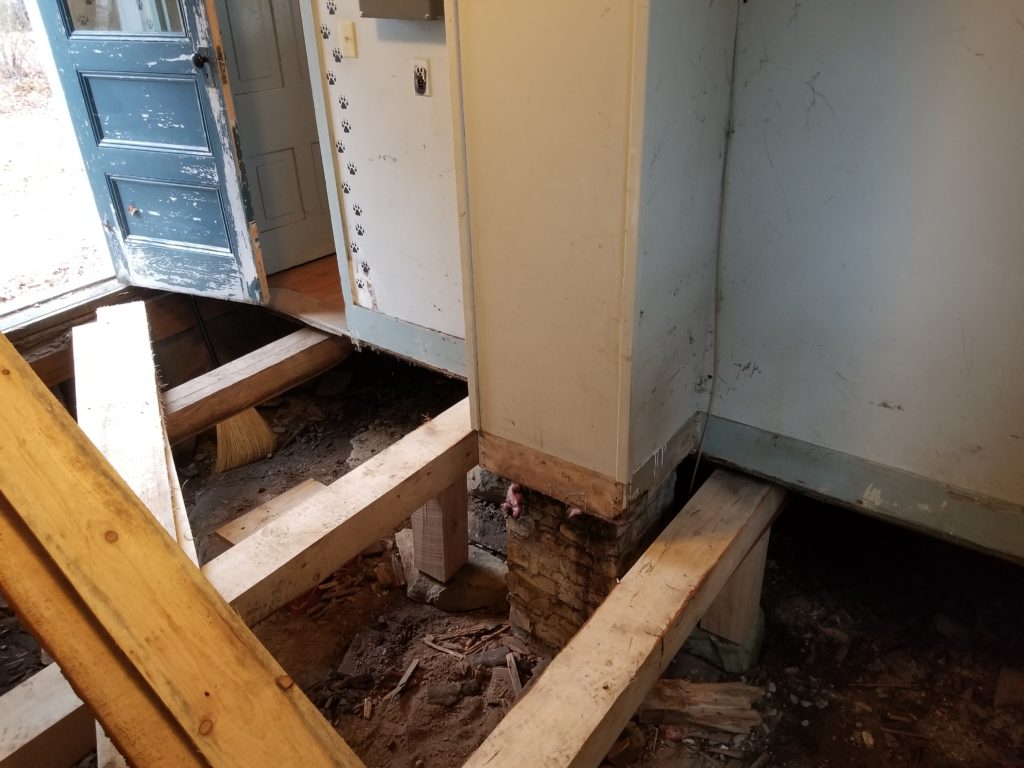
Some of said planking below, prior to deployment
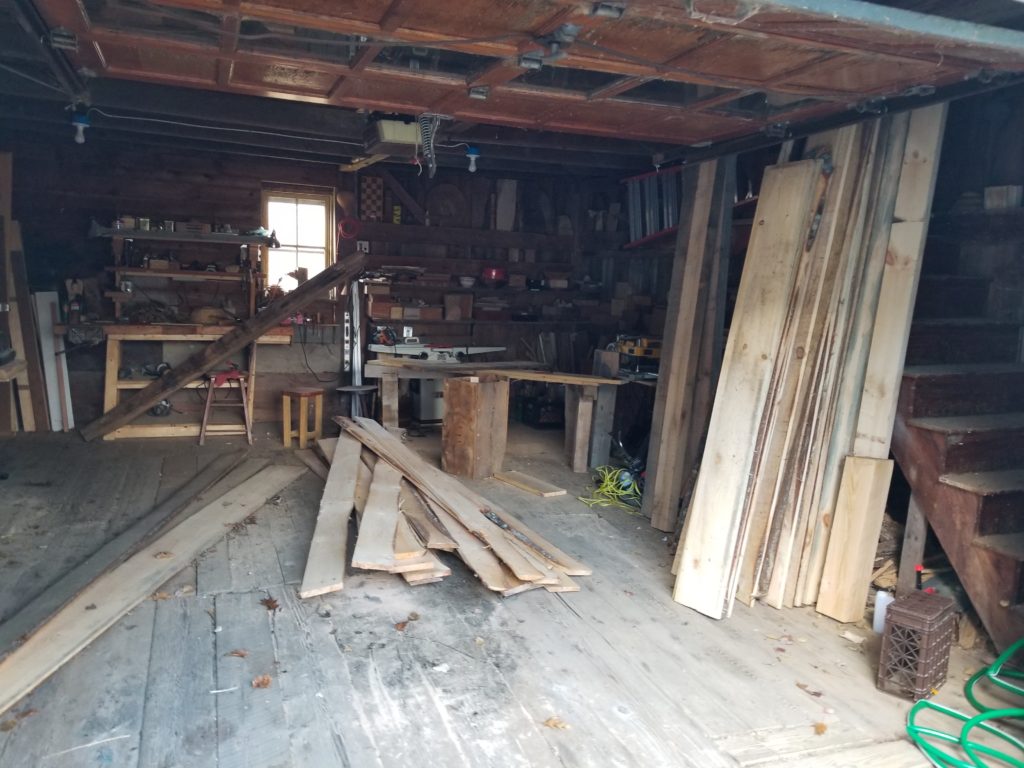
Ah but rot, rot and conscience and good sense – what can one do, when beholding rot, too much rot, but address it?
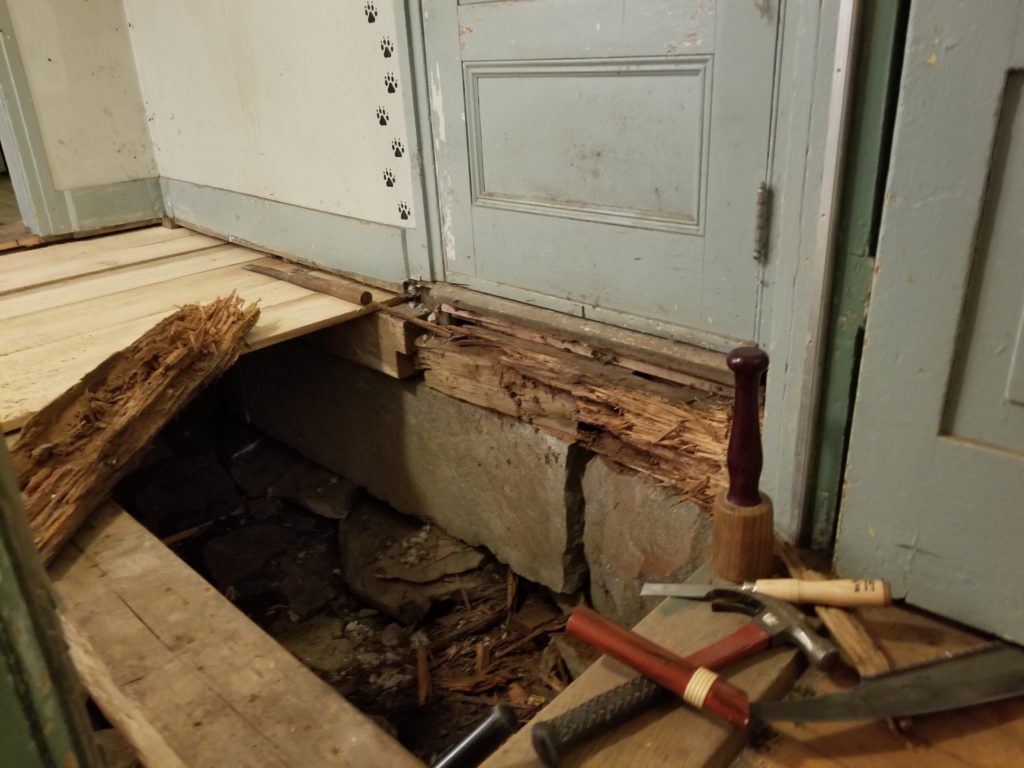
It’s a hard line, to say what is sufficient. For this whole project I’d decided that the mission success criteria would be a minimum of 5 and ideally of 20 or more years of function, at minimum cost, inasmuch as I (continue to) hold larger plans for the re-doing of this whole space but at the moment that project must wait. I happened to have some lovely red oak 6 x 6 orts, however, and one of exactly the right length was in the barn.
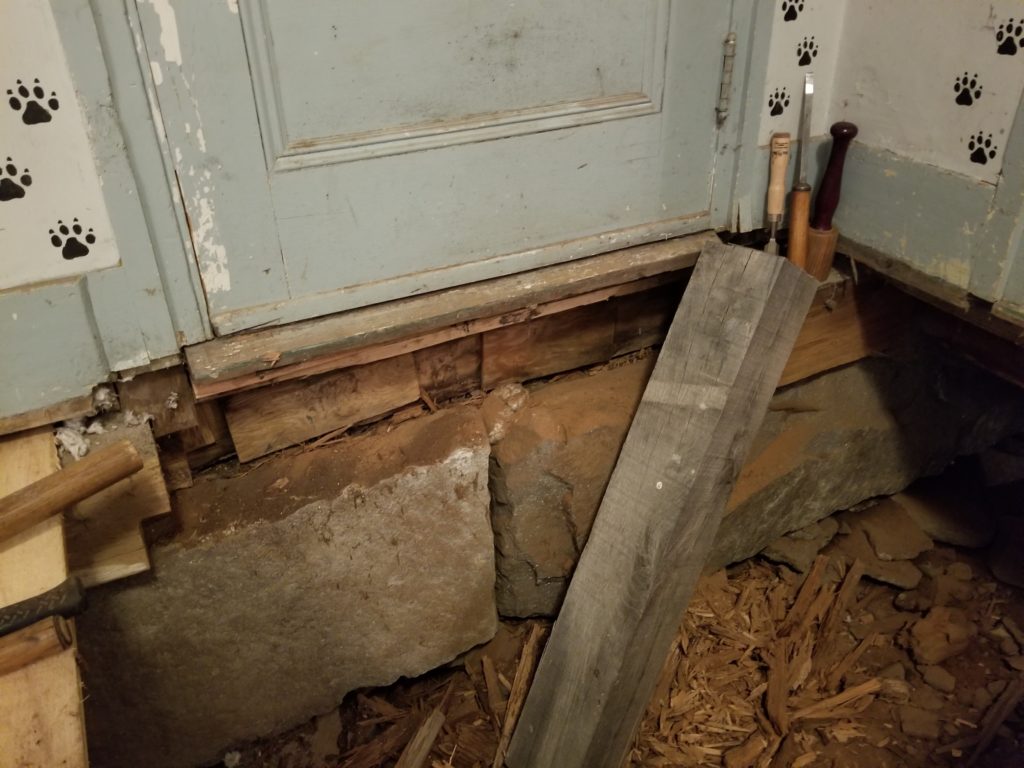
Hope increases as these bits of good fortune accrue.
As it had been, I decided to stick with the three layers of decking. The first two laid the long way, divided on the center line so that of could remove the floor in halves if such a need were to arise.
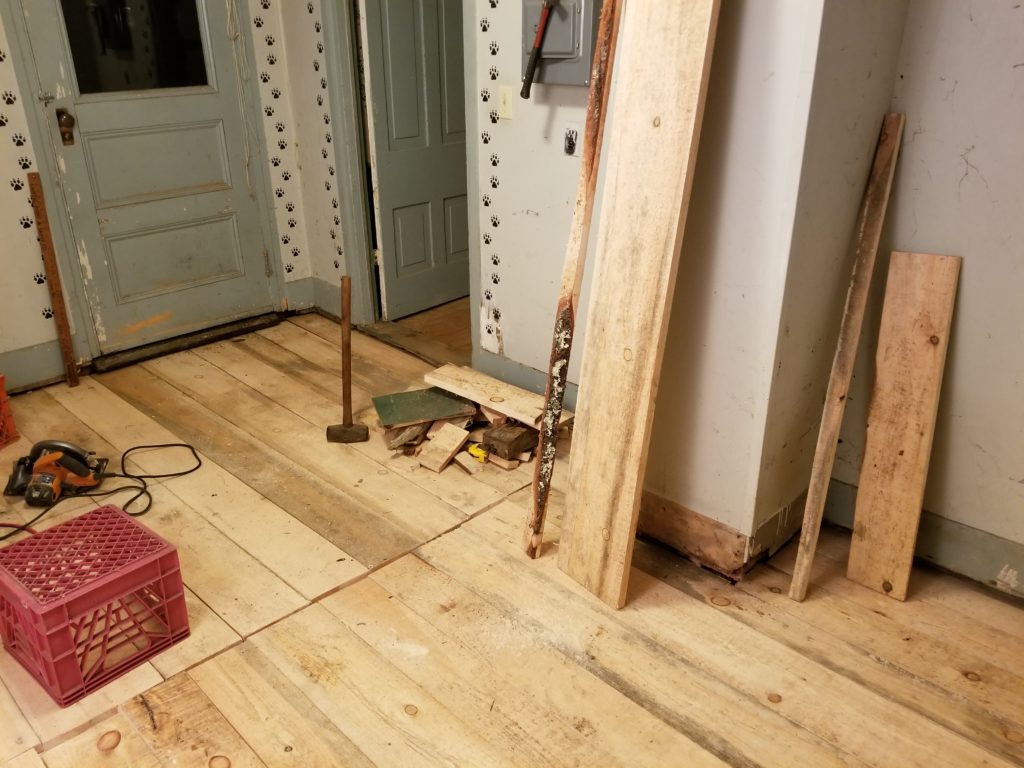
An extra bonus was to re-use some of the old decking as shelves where the refrigerator was. But wait! I know your eager mind has had the fate of the refrigerator as a significant and unabandoned thread. Fear not. As with most projects, they grow. I was aware that simplest would be to put it where it was, but because the wall between the firewood cubby and the pantry was not in the long term plan anyway, and the firewood cubby by itself was providing no utility, and a larger pantry would be more useful, well – the refrigerator would go in corner of the firewood cubby space and therefore be brought back into the pantry by the destruction of the wall. Voila! (some emojis).
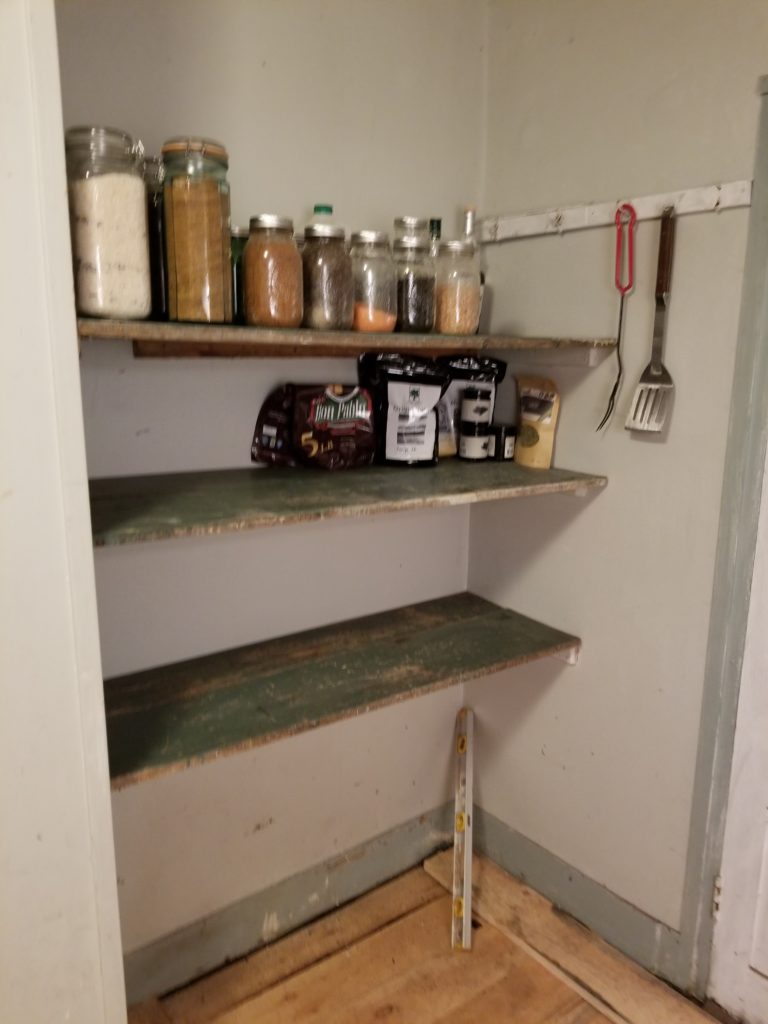
A brief shout out has to go to the ‘slick’ below, a old word for a wide chisel, as well as to the oscillating multi-tool. I learned about this tool from the industrious farmer. I asked if it had a simpler name, as no one wants to say “Hey, do you know where I put my oscillating multi-tool?’, but if there is a secret name for it he either did not know or would not share. This, in my piggery, I christened it an Omt. Do not attempt to guess how I divined the name. I’d never had or knew of omts. Sublimely useful.
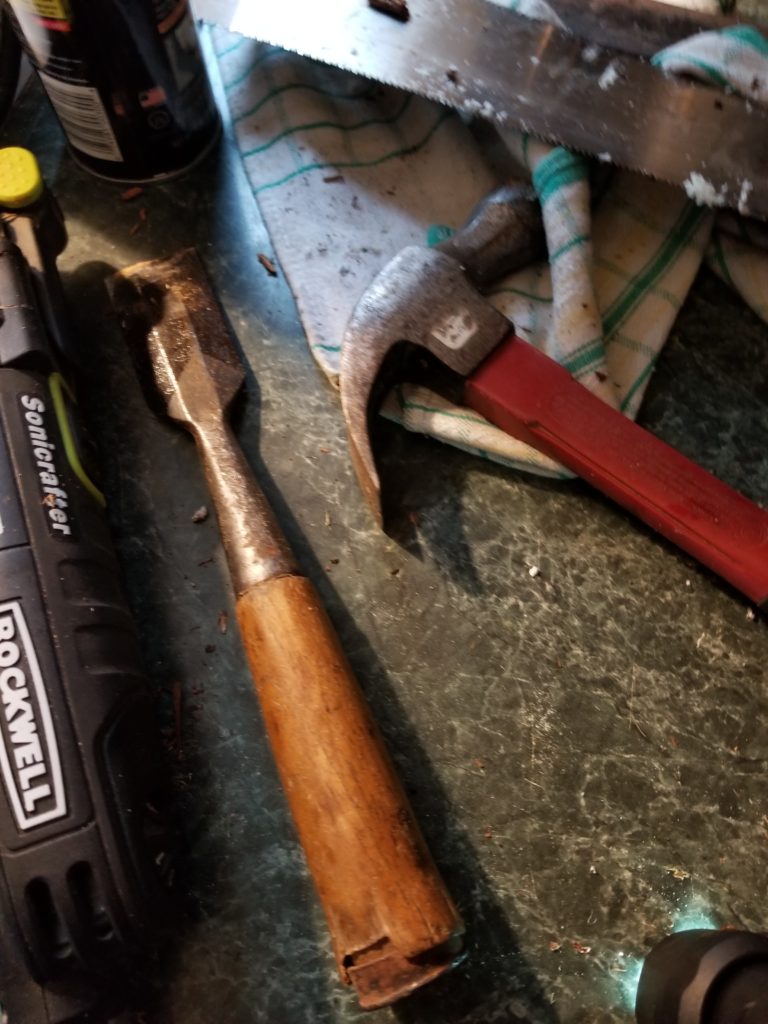
This epic sure goes on, eh? It took months, several nights a week, some weekends. Below find the wall to be destroyed. Layers of paint and wallpaper and horsehair plaster, cottony insulation, some wiring
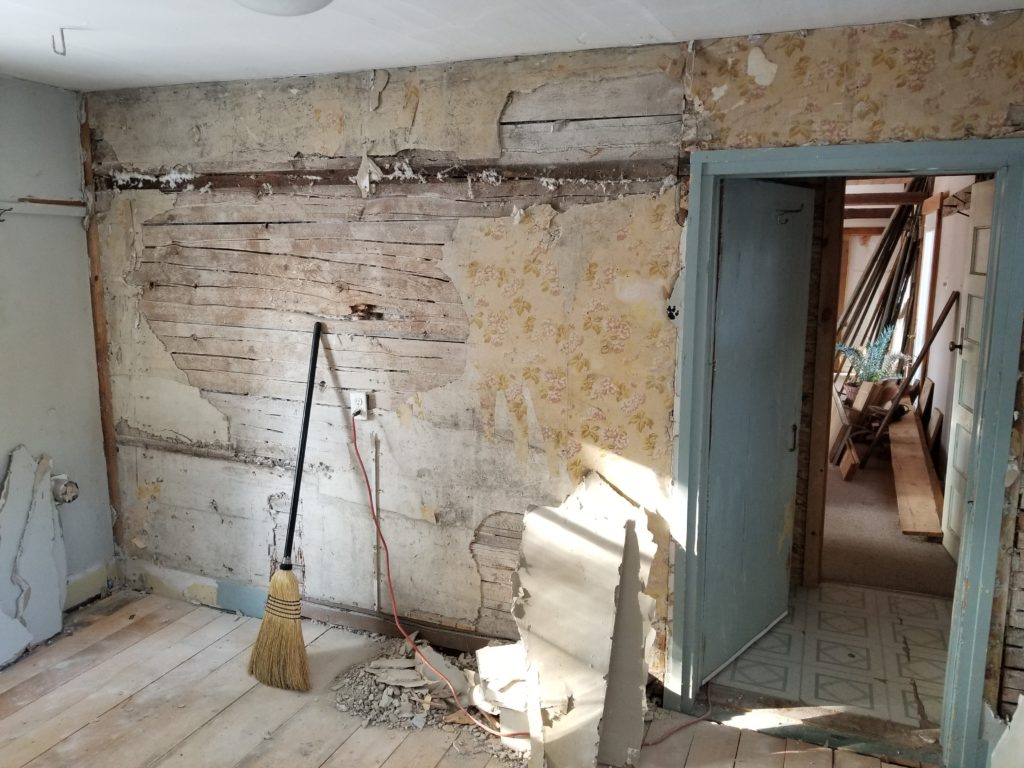
Sparing you then the many photos of intermediate destruction, please find wall removed and thus refrigerator re-integrated into pantry. The old door, now a door to nowhere, was left at the request of my daughter. No worries, the whole space is temporary and experimental. Of course.
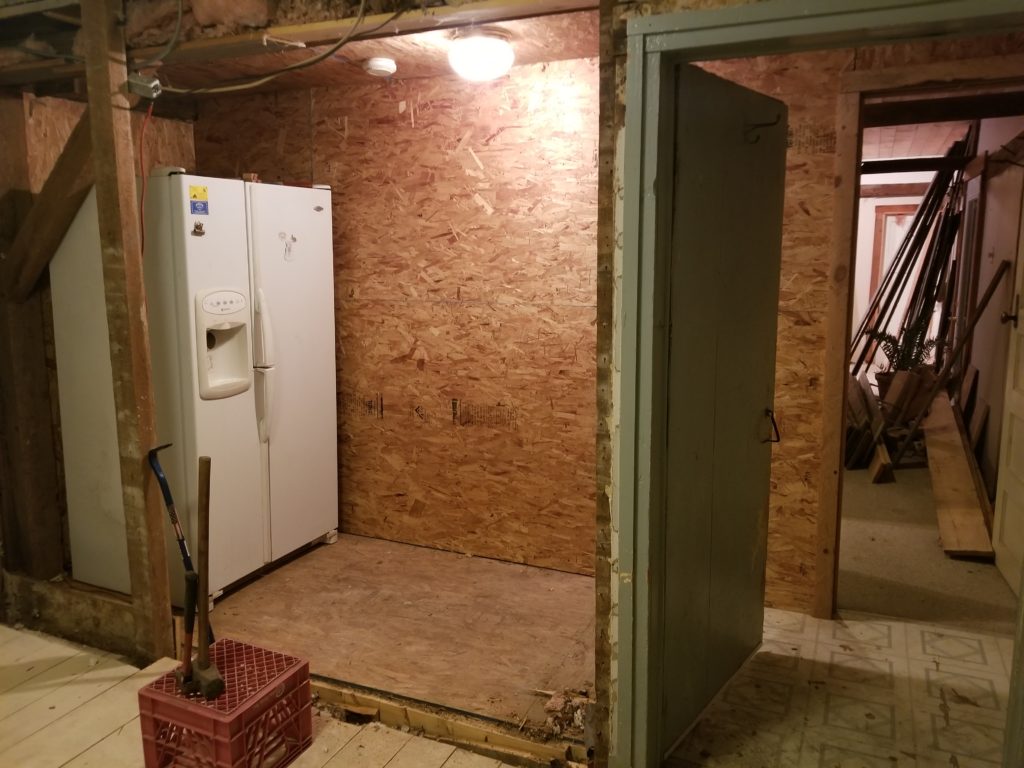
There was still much to learn, however, especially regarding the place of humility. The original pantry floor had no insulation beneath it. The room never seemed cold, but then again there was no reason to spend any time in it. Spending time there made it very plain that it was borderline icy on cold days, that the refrigerator was lifting the temperature of what it contained. So up came the carefully laid board (but there the fact that I had not nailed them down was a great thing) and I now had to lay insulation between each of the 3 foot segments between the beams.
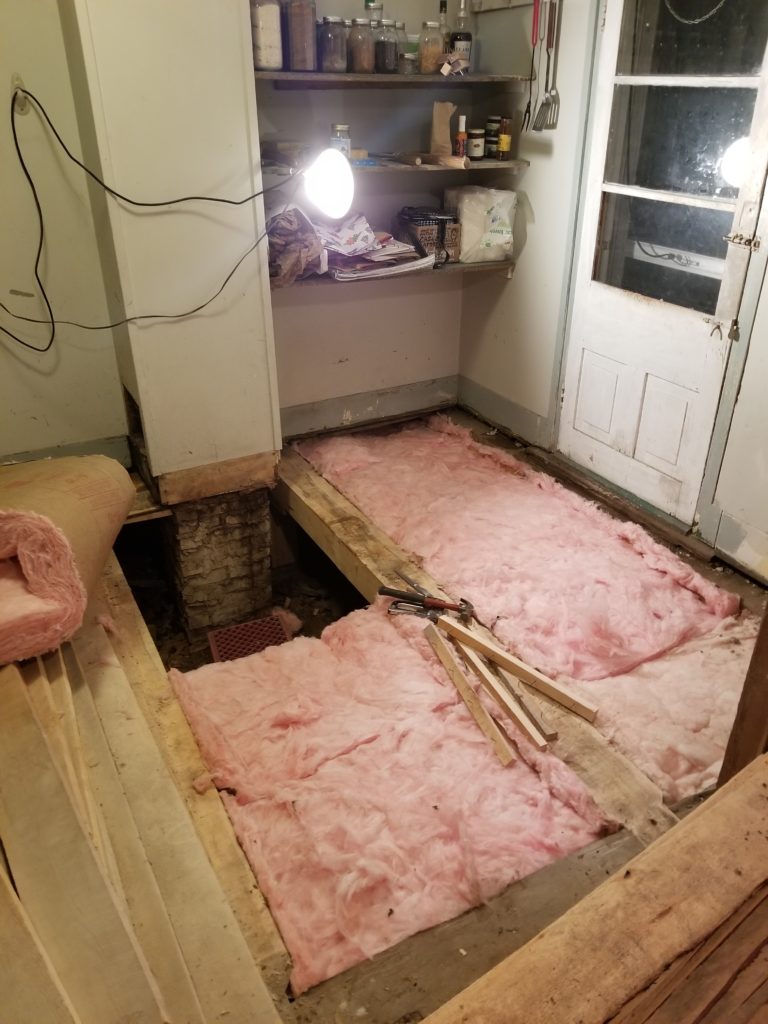
In order to accomplish this, and to have the pink side up, it seemed that staples just were not doing it, and that some sort of slats would do much better. Pile of custom cut slats below, pre-nailed even. Detour city, but in the name of better outcomes.
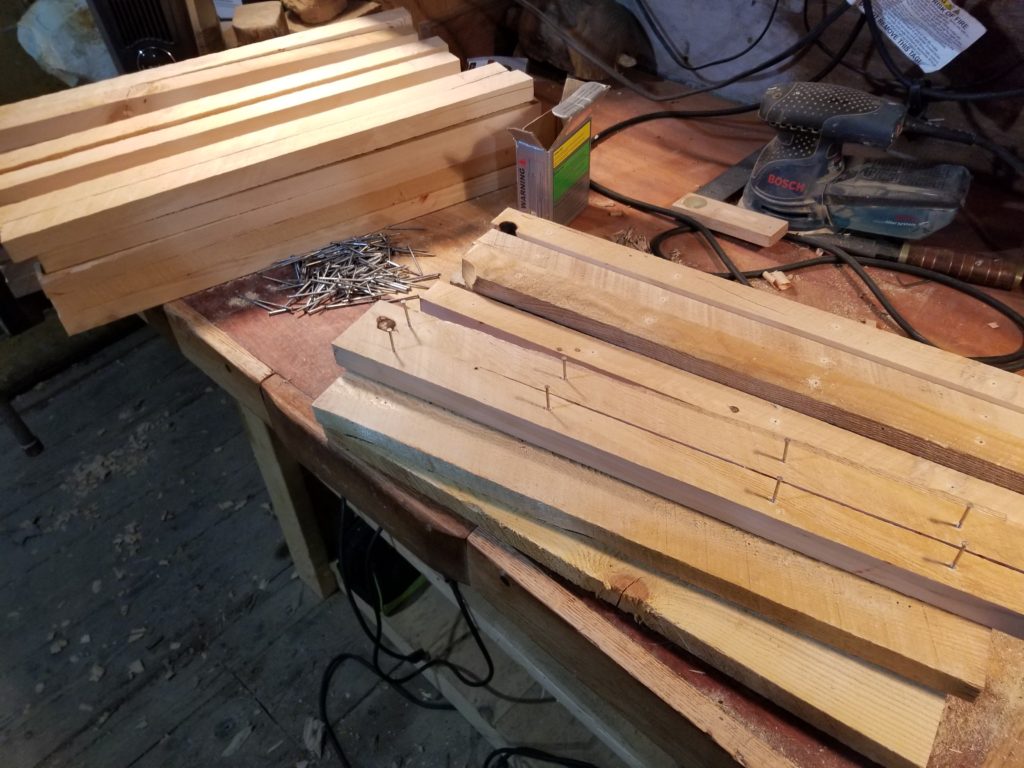
Last panels before being placed. Notes on virtue of forethought. And as for fiberglass dust? I ask not.
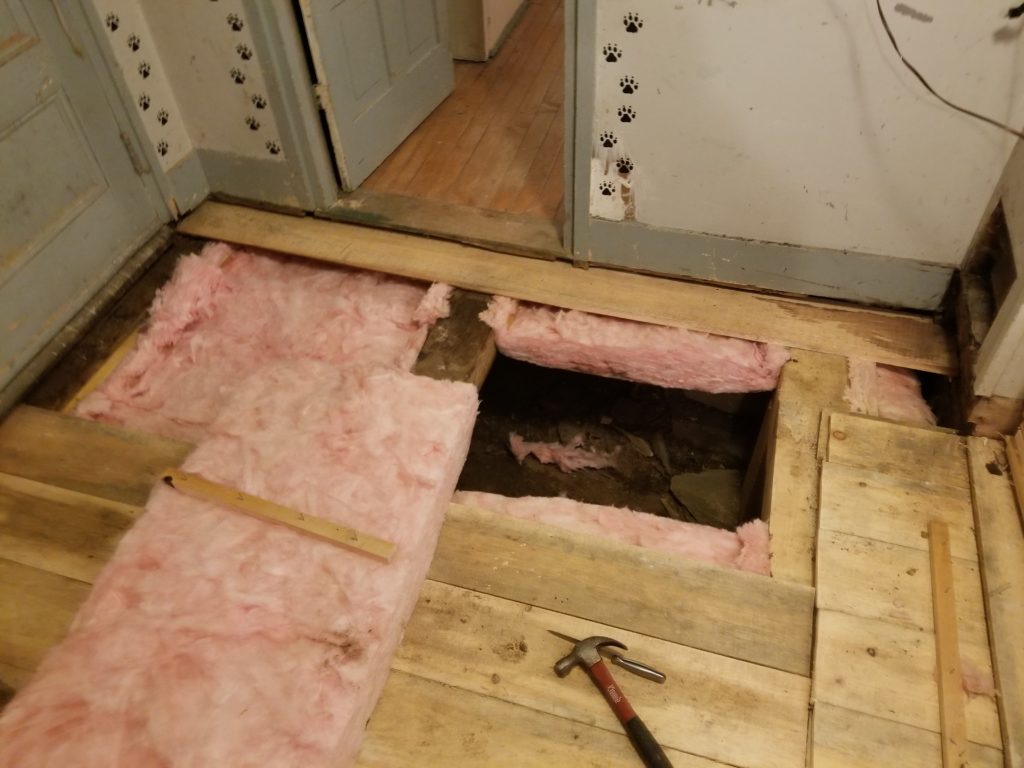
Note now the ceiling, multi-layered, the dangling wires, and
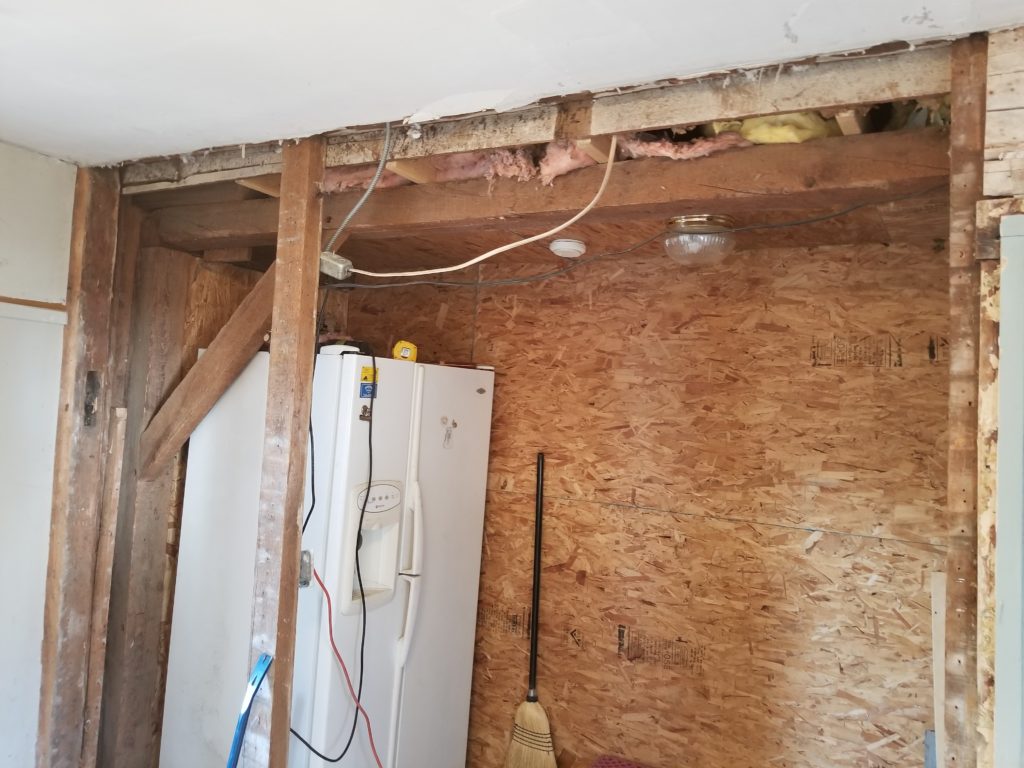
the floor – quite discontinuous
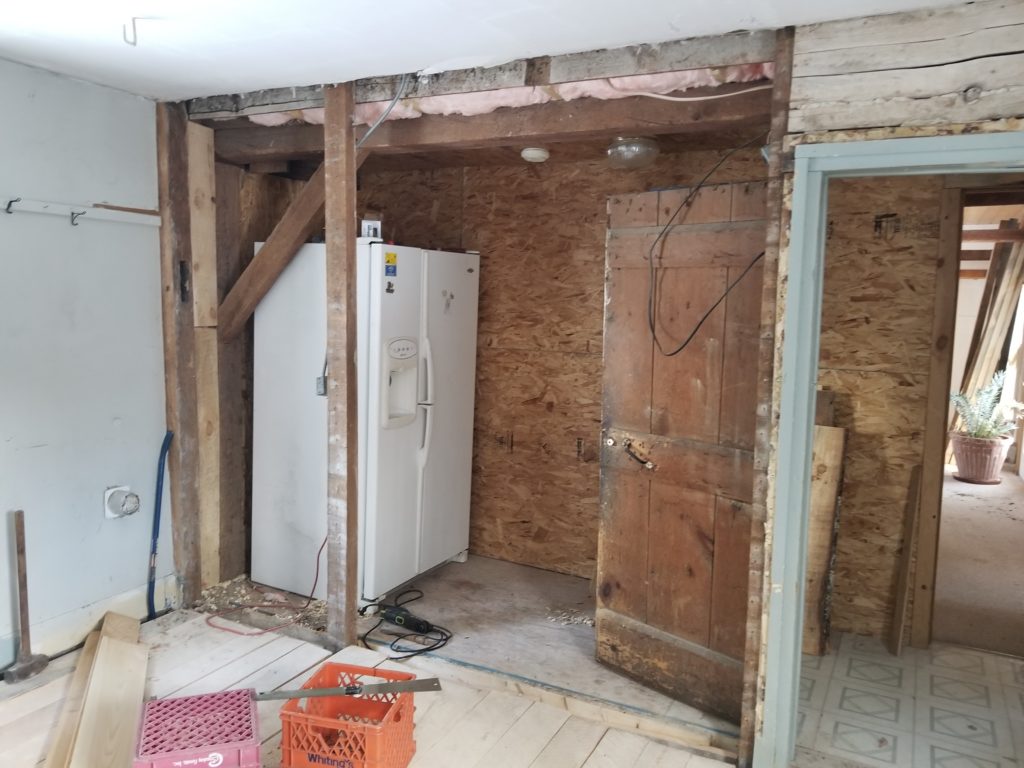
challenges, at my (low) skill level. I took it ploddingly, addressing each problem directly but without much thought on the overall unity. If function is first how far off the mark could this be? Below the outlet in the ceiling, but essential and convenient to the very patient refrigerator.
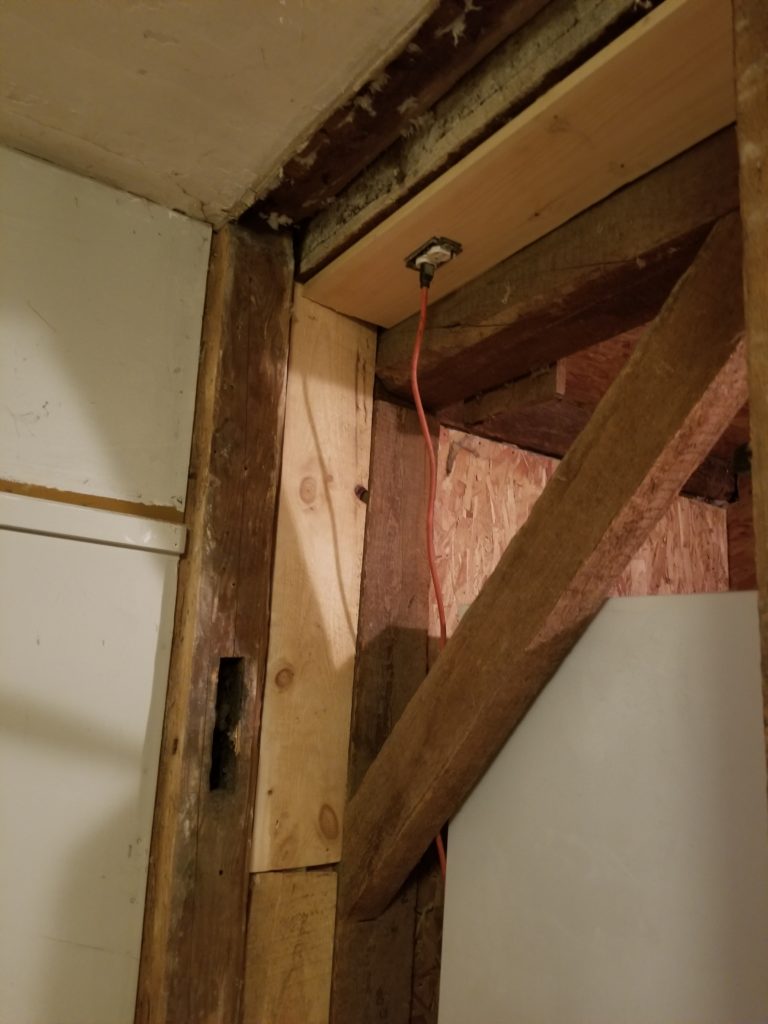
an even uglier but nonetheless functional outlet placement –
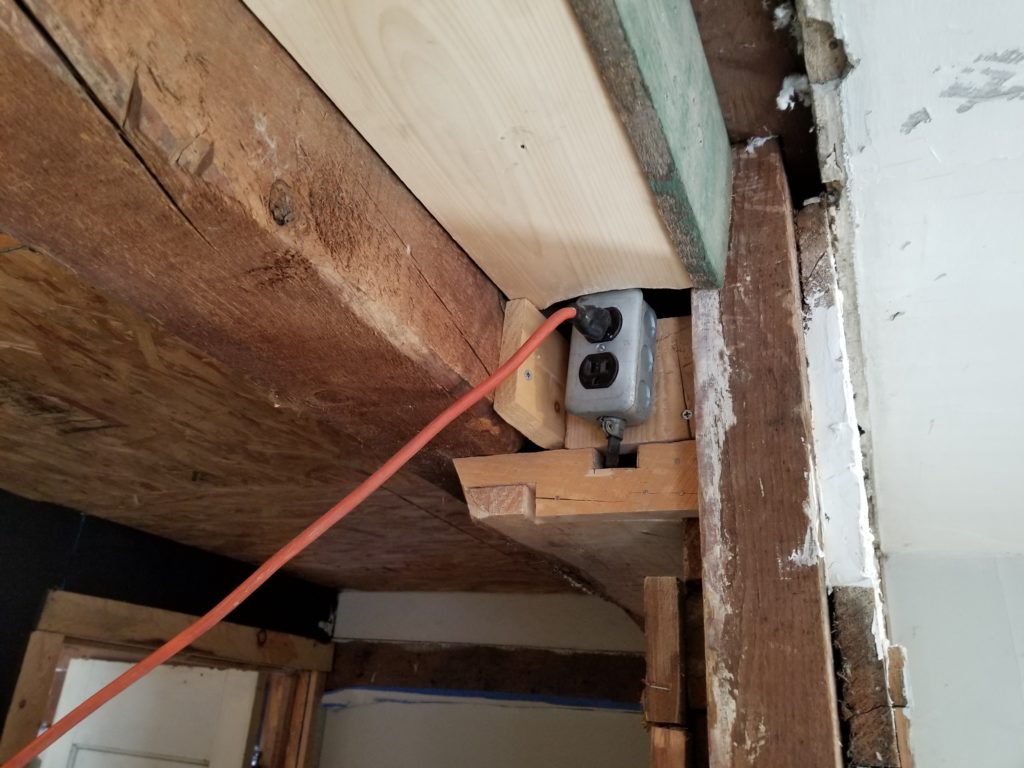
and again sparing you – this time of the details of ceiling and floor unification (I know, you’re welcome), we get to a colored floor. Much debate has raged, and it seems that the perception of the color of the floor is greatly skewed by gender. Only the colors blue and purple have been reported as being seen.
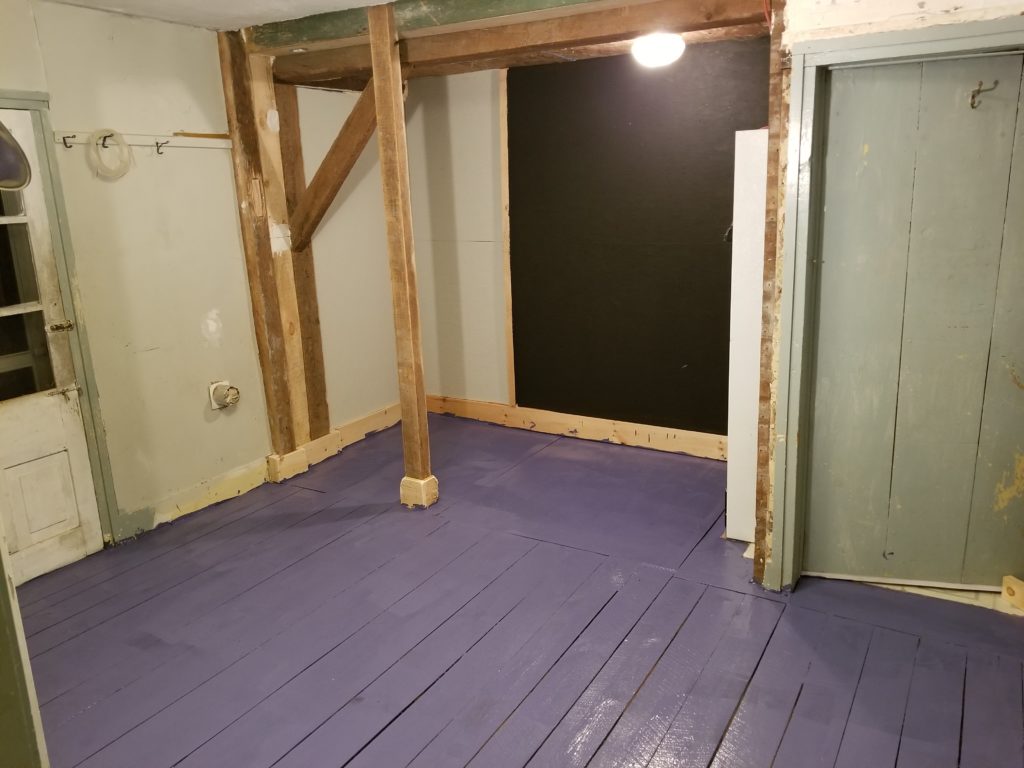
Shelves in the same color
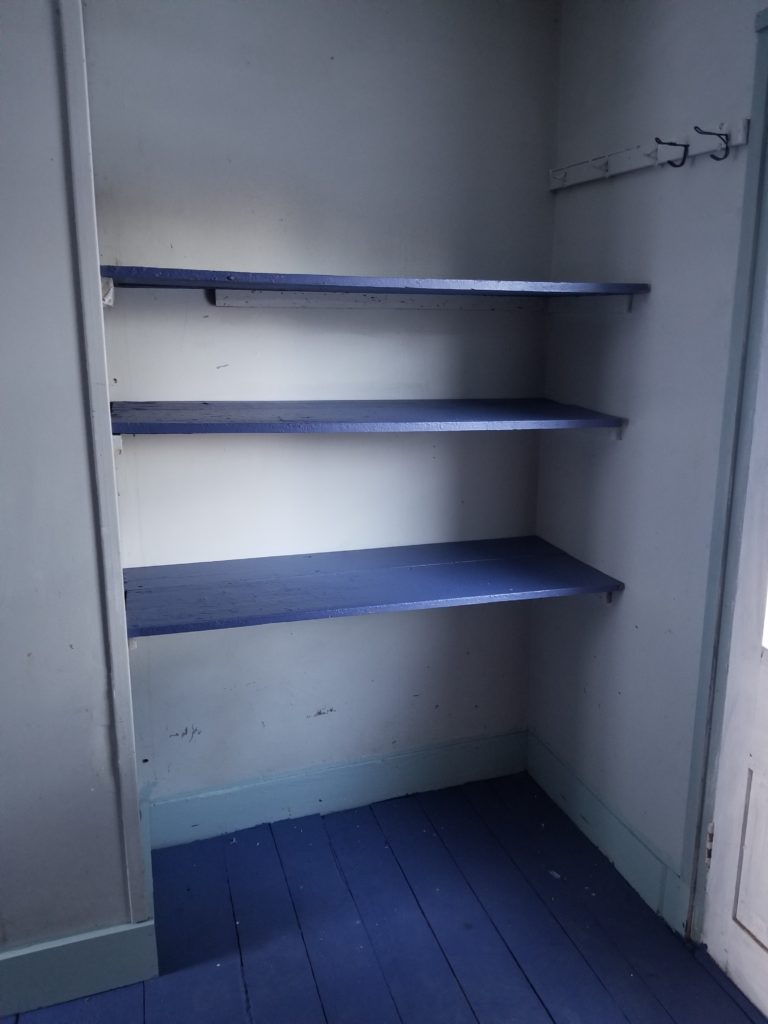
You may recall the stencil footprints around the door in the bridge of doom picture. When I’d moved in, the stencil itself was taped to wall, as if the stencil-er had been called home suddenly. I took it down and set it aside, not knowing that more was meant for it in this life.
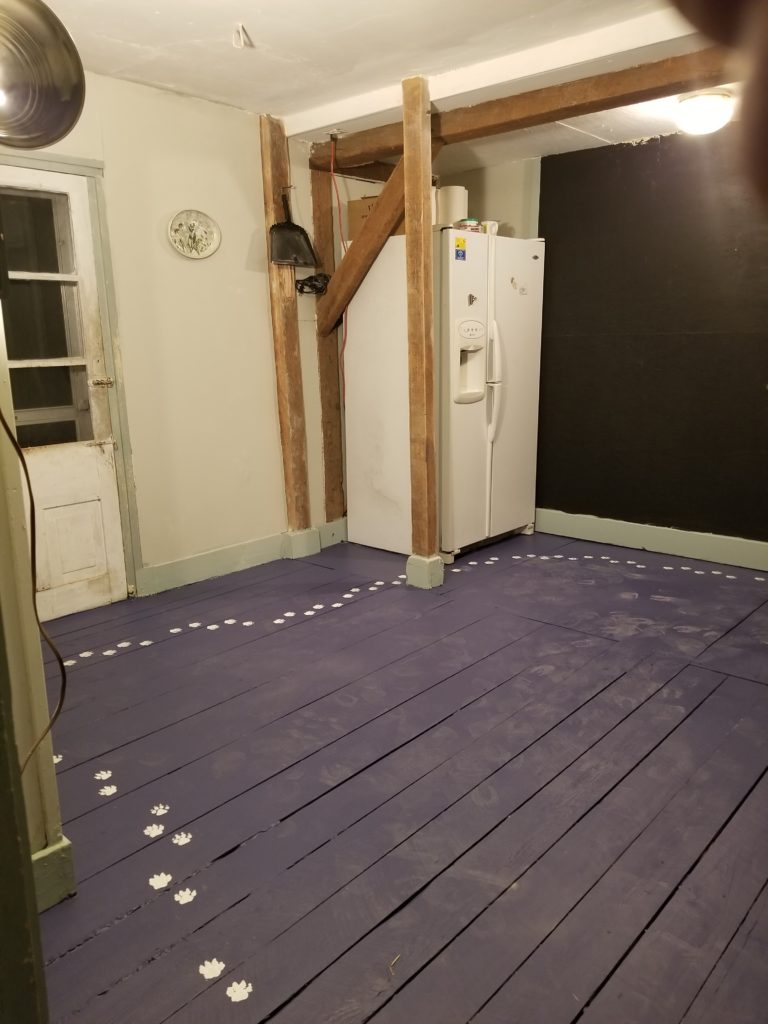
I remain very tickled by these, as I am by the little entryway below No doubt you are aware that if you give a mouse some building materials, he may build a neo-classical Greek revival entryway, in keeping with local architecture.
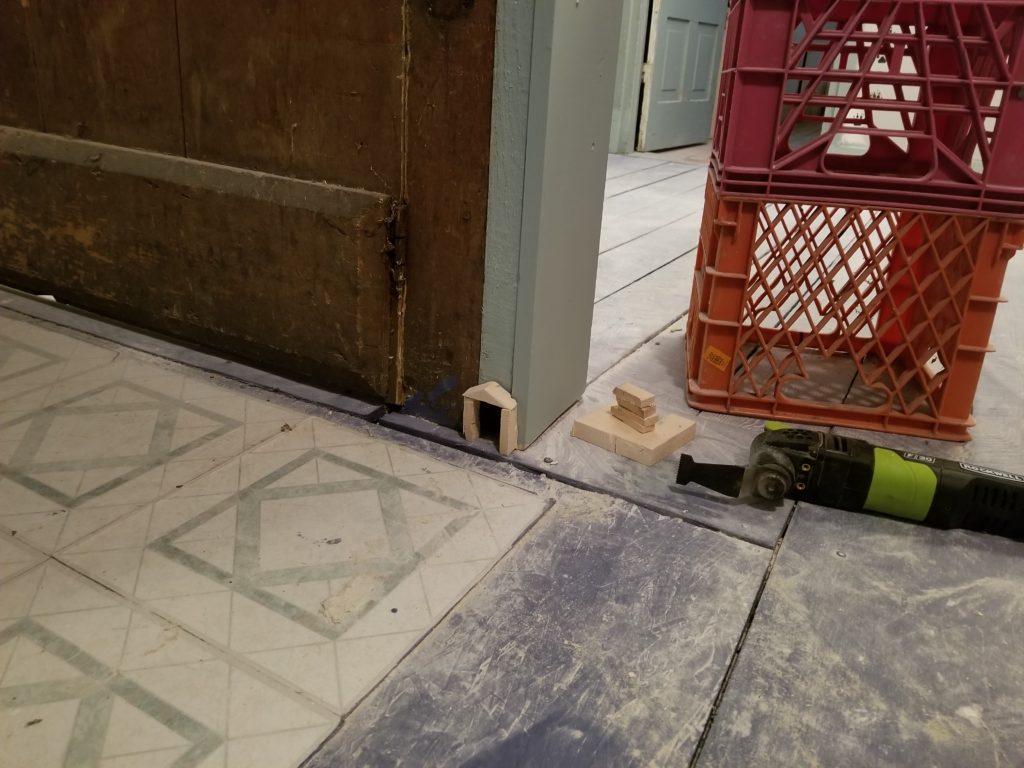
Now that black wall – it was not meant to be a black wall, but rather the blackness as a backdrop for some wonderful non-representational art.
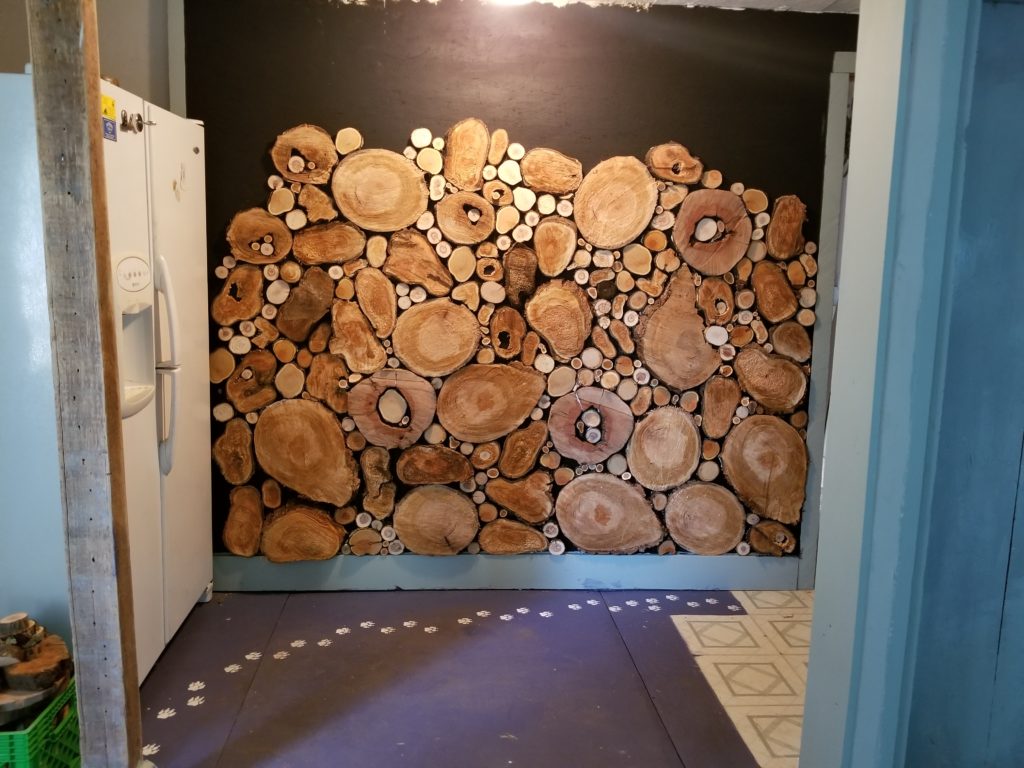
All stories, this one true, weave into thousands of other stories. Much was learned in re-building this pantry. The log slices above grew profound mold, mold that no bleach or ammonia could remedy, so down they came. The pantry is far better than it was, however, and I richer and thankful for the experience.
